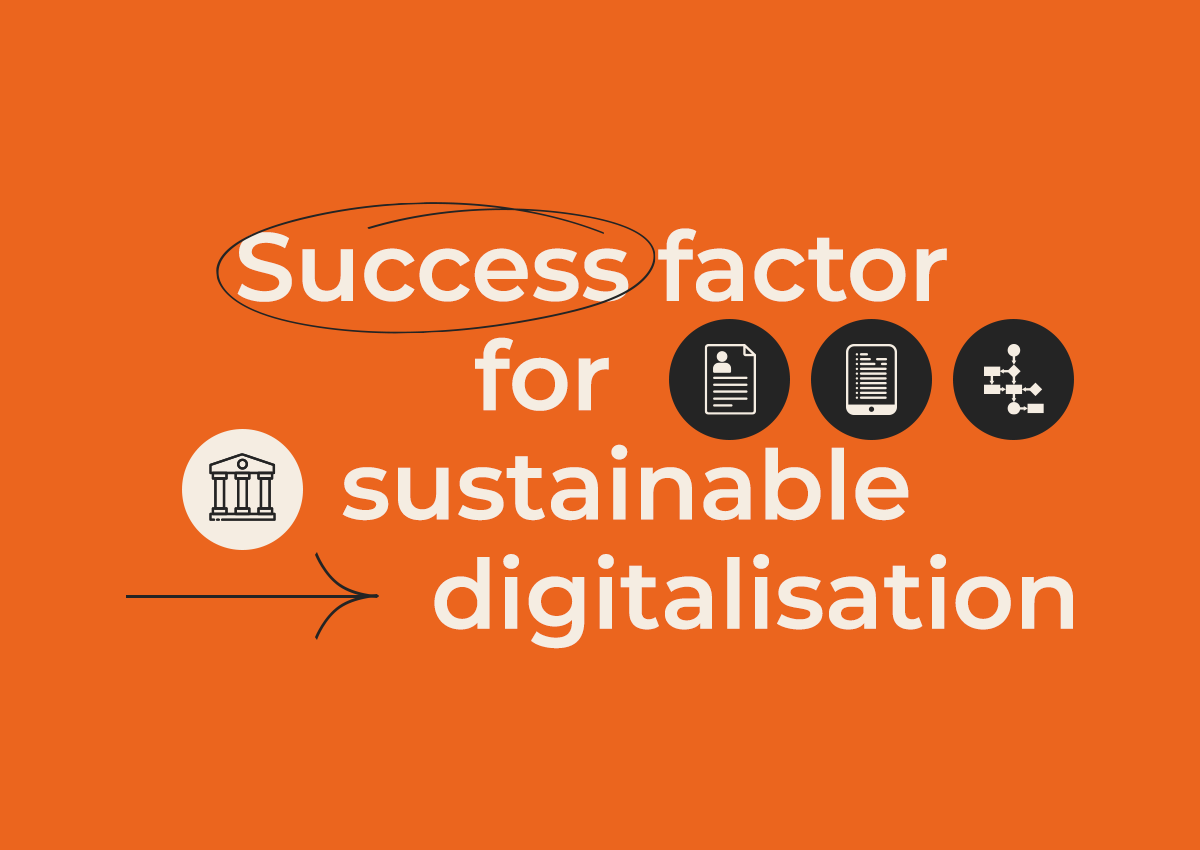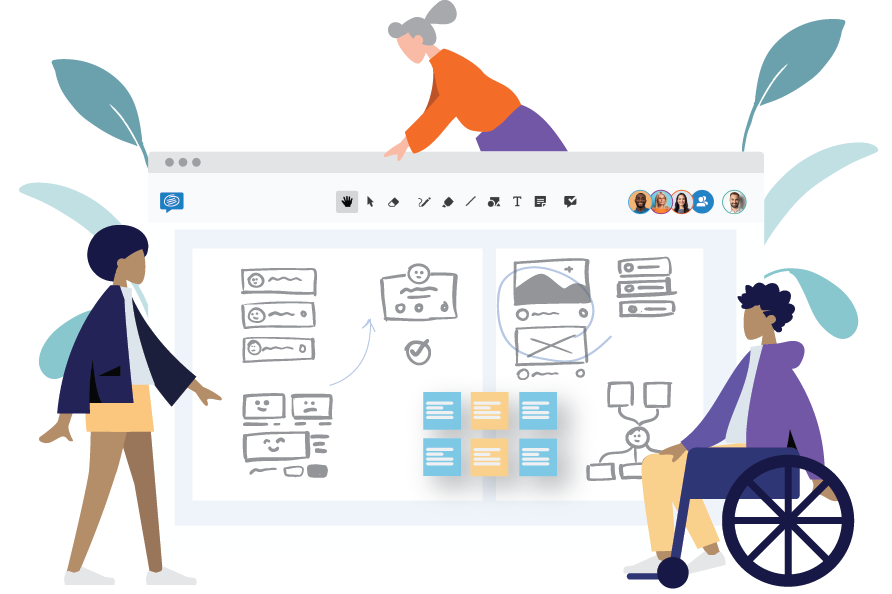Whether you’ve got a new team member, you’re kicking-off a new project or your current team is underperforming, sometimes it’s time for a bit of a team shake up. Sure, you could all go out for a bit of team bonding at an escape room or trivia night, but the moment you get back in the office things will return to normal. So instead, why not try the Team Canvas?
The original creator of the Team Canvas template, Alex Ivanov has found that “Team Canvas works like magic for teams in trouble. Tested with distributed production teams, early stage startups in accelerators and creative groups in bigger companies, it makes team alignment more structured and accessible.”
We’ve created a free team canvas template and 10 Step guide that will give you everything you need to know to run a successful Team Canvas goal setting session.
How to use a Team Canvas template

You can use our Team Canvas template collaboratively with your team on Conceptboard’s online whiteboard. Simply open the template and click on the ‘Share’ button to invite your team into the board. Work together with live cursors, sketching tools as well as audio and video calls. All inside one visual app.
10 sections of the team canvas template
Fill out the various sections in the template as listed below:
1. People & Roles (5 mins)
A simple introduction to clarify roles and titles. Ask everyone to fill out a sticky note in a different color and place it in the People & Roles section. You should only need five minutes for this. If you want to dive deeper you could also use the Team charter template for this section.
Questions to ask:
- What are our names?
- What are the roles we have in the team?
- What are we called as a team?
2. Common goals (10 mins)
Ask the team to agree on common goals for the team by writing their ideas on sticky notes, then discussing the most important ones. These may already be known, or you may need to work them out now.
Questions to ask:
- What you as a group really want to achieve?
- What is our key goal that is feasible, measurable and time-bounded?
Examples:
- Sell out tickets to our Gala night by 30 June.
- Launch our new service in the US by the end of the year.
3. Personal goals (5 mins)
Ask your team members about their individual goals. These are individual, so ask everyone to place one or two sticky notes in this section, and discuss if you have time.
Questions to ask:
- What are our individual personal goals for this project?
- Are there personal agendas that we want to open up?
Examples:
- Become more confident using the event management software.
- Write weekly for our blog
4. Purpose (10 mins)
Ask the team to go one step beyond their common goal, and ask them why they do what they do. If team members are not sure, ask them, what makes them get up in the morning? Or what they were most excited about when they first applied for this job. There are no right or wrong answers here.
Questions to ask:
- Why are we doing what we are doing in the first place?
- What is something more important, which makes us pursue our common goal?
Examples:
- Become a thought leader in this field.
- Share knowledge and help people achieve their goals by using our software
5. Values (10 mins)
Ask the team what are their core values? As a team, what do they want to be known for, within the organisation or in the greater community?
Questions to ask:
- What do we stand for?
- What are guiding principles?
- What are our common values that we want to be at the core of our team?
Examples:
- Environmentally friendly
- Pushing the boundaries
- Cooperative
- Ingenuity
6. Strengths & Assets (15 mins)
Ask the team to share the key pieces of skills and assets available within the team. These can be everything from hard skills such as software knowledge, creative skills such as photography or interpersonal skills such as a good mediator. It’s good for people to share something about themselves, as well as important qualities they see in their teammates.
Questions to ask:
- What are the skills we have in the team that will help us to achieve our goals?
- What are interpersonal/soft skills that we have?
- What are we good at, individually and as a team?
Examples:
- Coding (iOS/Python/etc.)
- Speaks French
- Adobe Illustrator
- Good communicator
- Presentation design
7. Weaknesses & Development Areas (15 mins)
Now the hard part. It’s time to discuss the key weaknesses and areas for improvement that they see in themselves, as well as obstacles they face as a team. Try to avoid discussing others weaknesses to avoid any personal attacks.
Questions to ask:
- What are the weaknesses we have, individually and as a team?
- What our teammates should know about us?
- What are some obstacles we see ahead us that we are likely to face?
Examples:
- I’m often late
- I don’t feel comfortable using X Software
- We have a poor filing system
8. Needs & Expectations (10 mins)
What are they missing? This works well as a follow up to the previous sections. What do they need to strengthen their strengths and counteract their weaknesses?
Questions to ask:
- What does each member of the team needs to be successful?
- How the team could help each member with their needs?
Examples:
- Further training
- Weekly one-on-one catch ups
- More responsibility
9. Rules & Activities (10 mins)
Ask the team to agree on common rules and activities that can help them satisfy the previous sections requirements. Think of this as of outcome of the previous sections: a concrete set of rules and activities they want to implement.
Questions to ask:
- What are the rules we want to introduce after doing this session?
- How do we communicate and keep everyone up to date?
- How do we make decisions?
- How do we execute and evaluate what we do?
Examples:
- Use Conceptboard for all updates, instead of Emails
- Friday team lunches
- Stand up meeting at 10am everyday
10. Evaluation (10 mins)
To wrap up the session ask everyone: What was their biggest learning from the exercise?
Be sure to save the Team Canvas somewhere easily accessible and share the link, and be sure to assign people and time to allow for follow through on any new tactics or rules that the team will implement.
If you’d like to continue boosting your team’s output, check out our free OKR template, which explains how you can use Google’s favorite goal-setting framework ‘Objectives, Key Results’ to achieve fast results.
What is a Team Canvas Workshop?
The Team Canvas template is designed to help improve teamwork and bring all your team members on the same page. This free tool will help you align your team values, boost team culture, and improve performance.
Author of Lessons from Mars: How One Global Company Cracked the Code on High Performance Collaboration and Teamwork, Carlos Valdes-Dapena says to truly make collaboration succeed, it’s important to talk about why collaboration is essential, how it will pay off and who should be involved.
“Make collaboration clear, specific and compelling so it feels like something to be achieved. They make it irresistible,” says Valdes-Dapena.
The first thing to do is to find a time when everyone is available, and then invite them to join the Team Canvas template on Conceptboard.
If you have a globally dispersed team or remote workers, this will allow everyone to join in and participate in the session using the interactive whiteboard tools (e.g. online sticky-notes), as if you were face-to-face.
Alternatively, if you’ve managed to get everyone in the same room, all session notes are stored digitally by using an online collaboration tool; removing the need to transcribe everything at the end, or take photos of the board. You’ll also have it readily accessible to look back on or follow-up on.
Normally the team leader or a facilitator will introduce the Team Canvas and explain its purpose, e.g. align the team or get better at understanding our roles and values in the team. They will then be the one to ask questions and keep everything on track.
There are nine set categories with specific questions to ask your team to ensure you get thoughtful and important answers. Then the final step asks you to evaluate the session.
Other business canvases
If you found value using the team canvas template, you should also have a look at other canvas templates such as the Business Model Canvas or the lean canvas. Why not go a step ahead and use the Value proposition canvas or the remote meetings canvas? Discover more on our blog!




